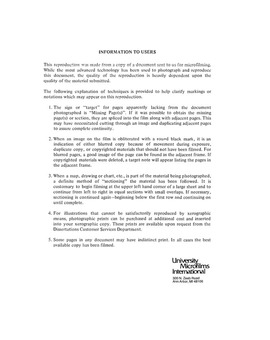| dc.contributor.author | Deeley, George M., | en_US |
| dc.date.accessioned | 2013-08-16T12:29:18Z | |
| dc.date.available | 2013-08-16T12:29:18Z | |
| dc.date.issued | 1984 | en_US |
| dc.identifier.uri | https://hdl.handle.net/11244/5304 | |
| dc.description.abstract | Another laboratory study was conducted to determine the behavior of metals within drilling fluid wastes stabilized by the addition of flyash. Drilling fluid wastes were mixed with varying proportions of flyash ranging from 10 to 30 percent. After allowing the mixtures to set for 1 week or 5 weeks, EP Toxicity Extractions were performed and the resultant liquid analyzed for arsenic, barium, chromium, lead, and zinc. The behavior of these elements was not significantly affected in the mixtures, beyond that expected by the physical processes involved. No chemical reactions appear to be taking place which might result in a significant release of metals to the environment. Therefore, with respect to the metals tested, flyash stabilization appears to be an acceptable treatment method for drilling fluid wastes. | en_US |
| dc.description.abstract | A laboratory study was conducted to determine the influence of pH and ionic strength on the distribution of arsenic, barium, chromium and lead in three different drilling fluid wastes. Samples were obtained in the field and equilibrated in the laboratory under controlled conditions. A sequential extraction procedure was then used to fractionate the heavy metals into the designated forms of exchangeable, adsorbed, organically bound, carbonate, and residual phases, thus providing insight into the potential availability of the heavy metals for possible remobilization effects into ground or surface waters. The majority of each of the metals studied was found in the organically bound, carbonate, or residual forms, with the relative distribution among these forms depending on the pH and type of drilling fluid. Generally, decreasing pH caused a shift from the more stable (residual) form toward less stable (carbonate, organic) forms of the heavy metals. Changes in the ionic strength of the equilibrating solution, by diluting to 0.5 and 0.1 times field strength, had no significant influence on the distribution of the heavy metals within the solid phase. The occurrence of the metals in the more stable organic, carbonate, and residual forms in the waste drilling fluids, coupled with no significant release to the aqueous phase upon varying pH and/or ionic strength, indicated the resistance of these waste metals to remobilization from waste drilling fluids. | en_US |
| dc.format.extent | xix, 272 leaves : | en_US |
| dc.subject | Environmental Sciences. | en_US |
| dc.title | Chemical speciation and flyash stabilization of arsenic, barium, chromium, and lead in drilling fluid wastes / | en_US |
| dc.type | Thesis | en_US |
| dc.thesis.degree | Ph.D. | en_US |
| dc.thesis.degreeDiscipline | School of Civil Engineering and Environmental Science | en_US |
| dc.note | Source: Dissertation Abstracts International, Volume: 45-12, Section: B, page: 3760. | en_US |
| ou.identifier | (UMI)AAI8504320 | en_US |
| ou.group | College of Engineering::School of Civil Engineering and Environmental Science | |
